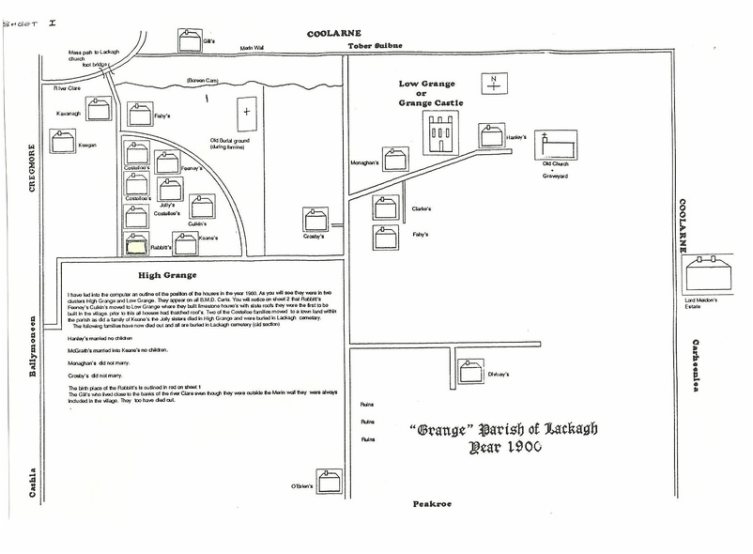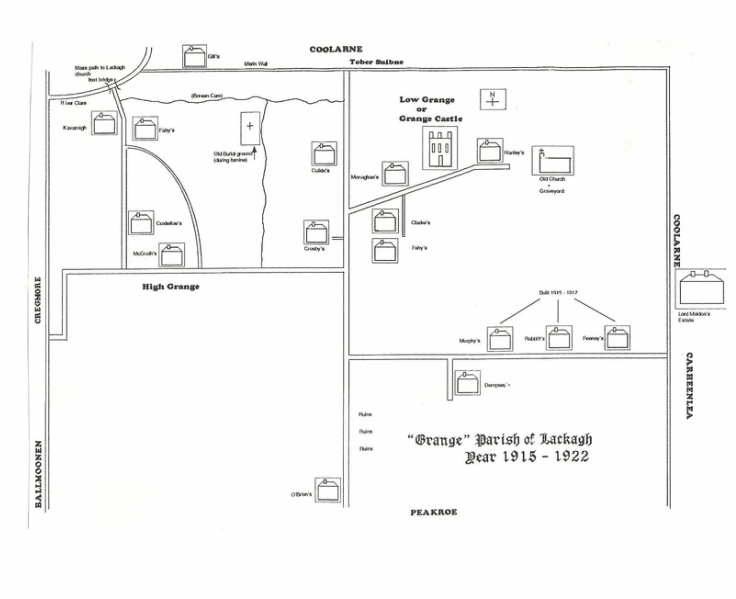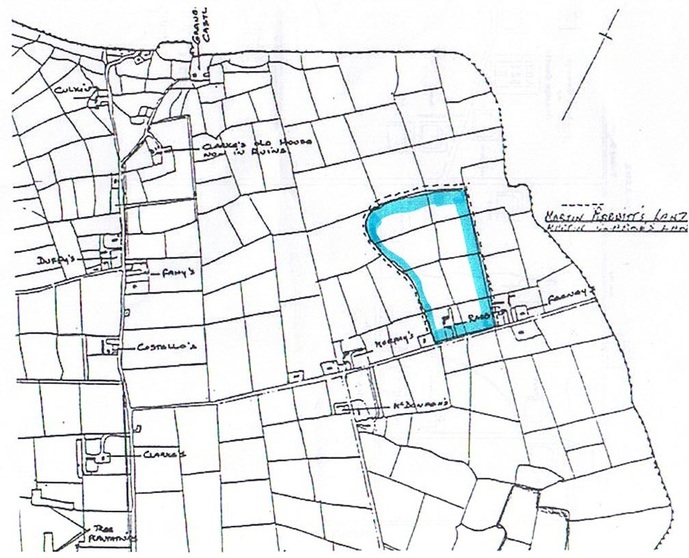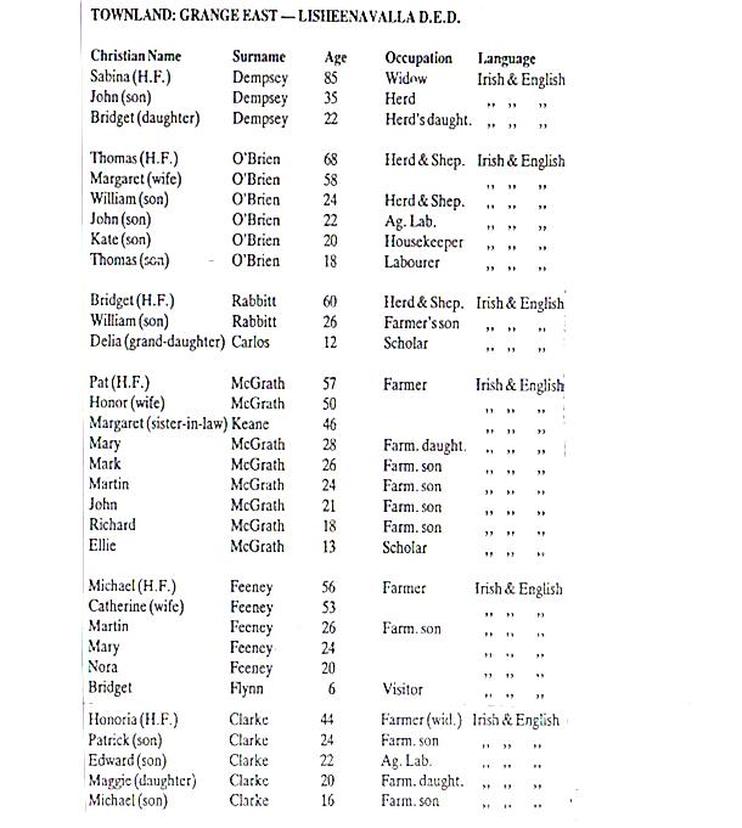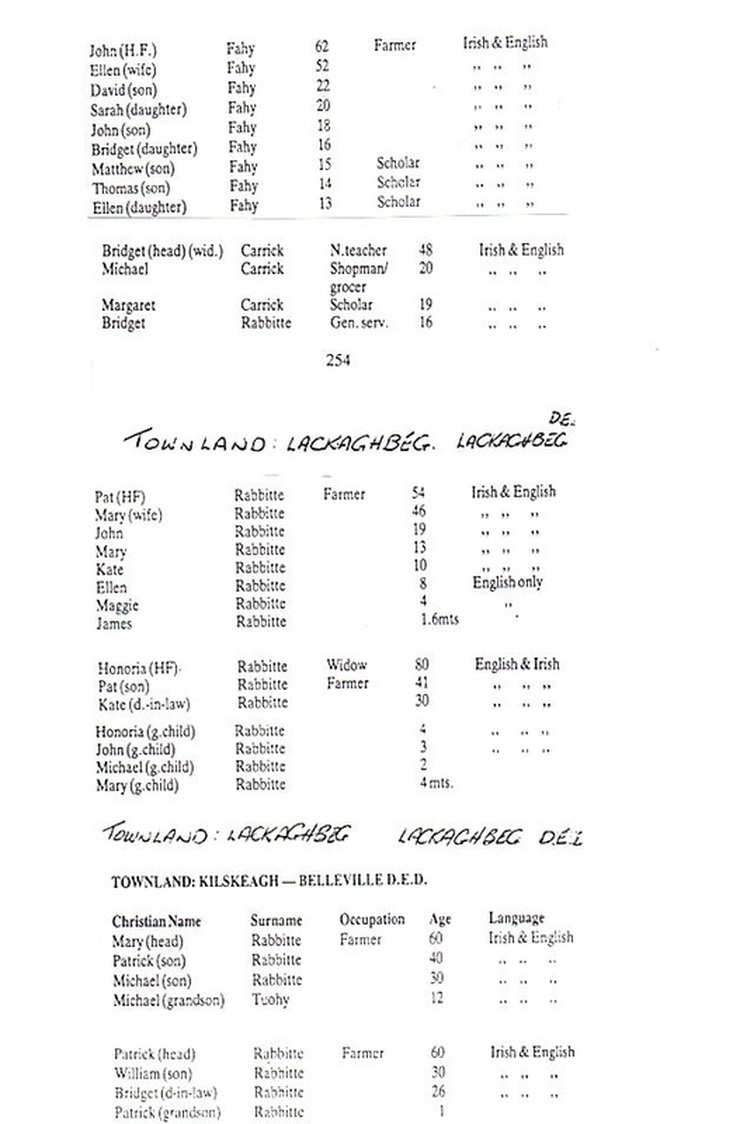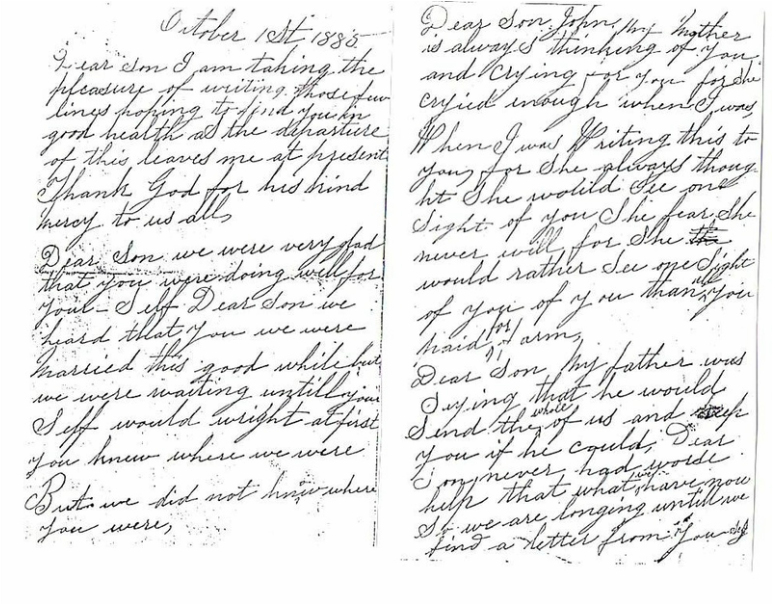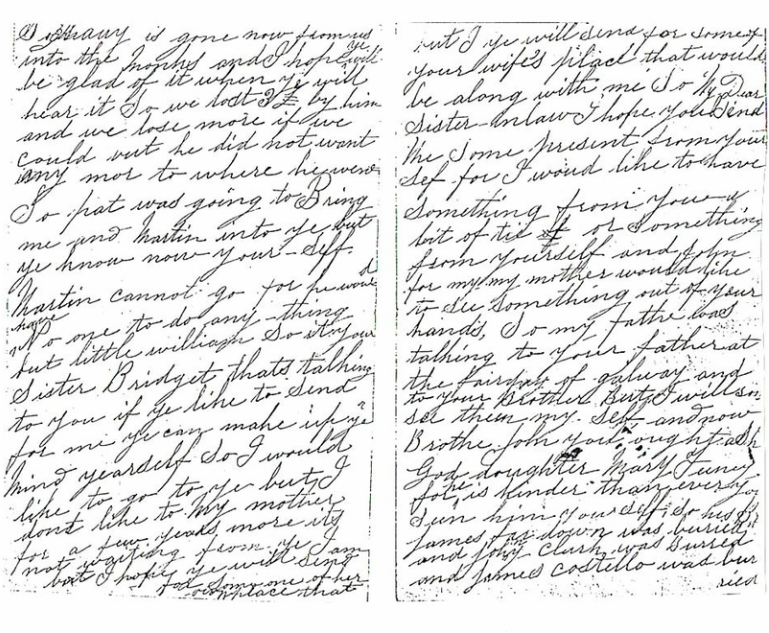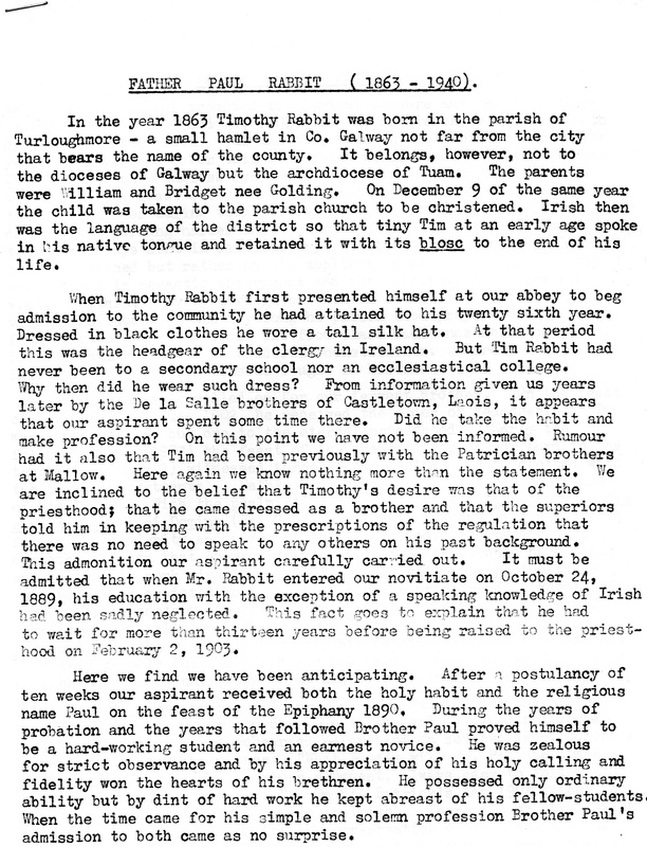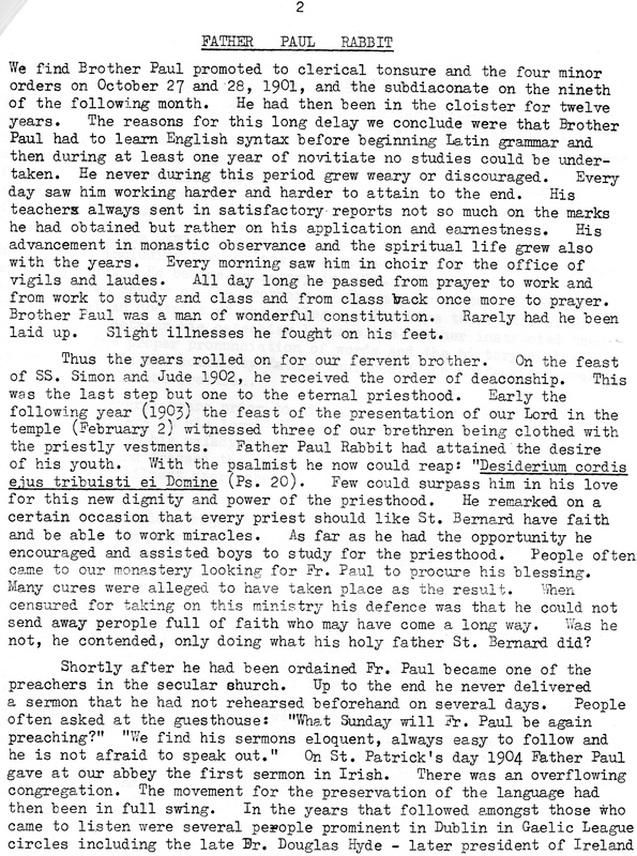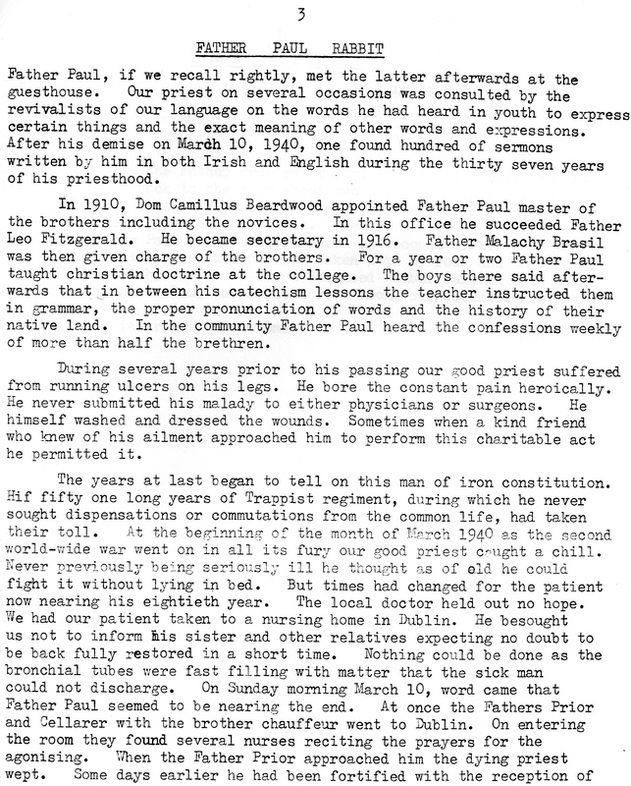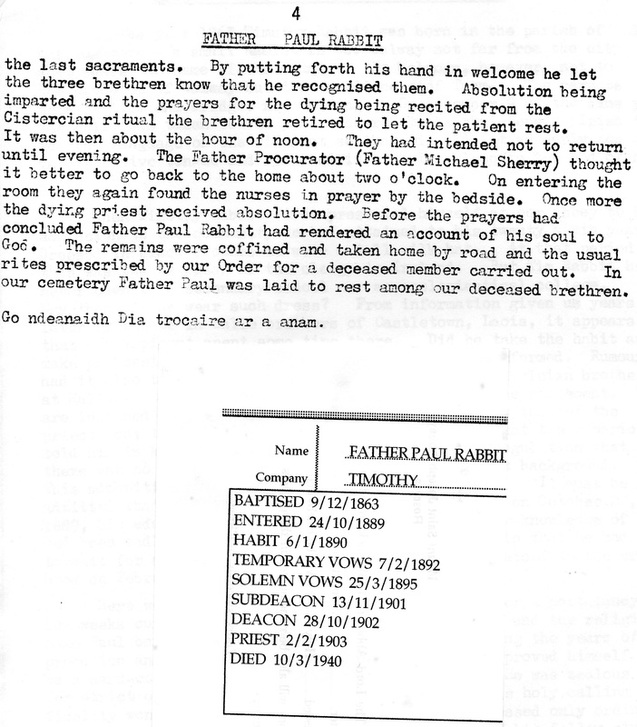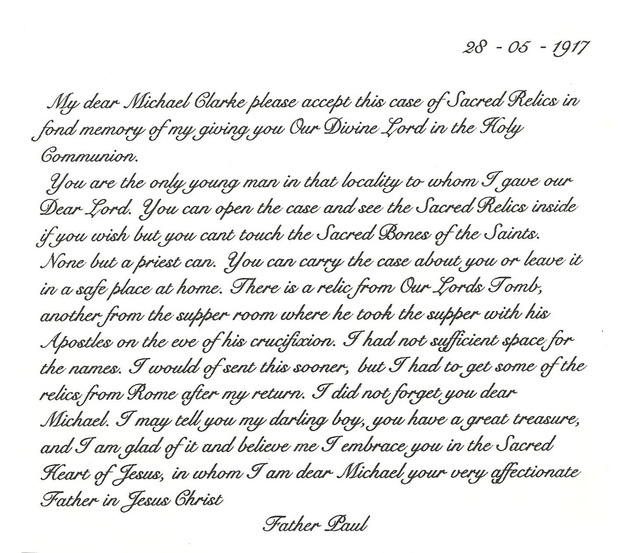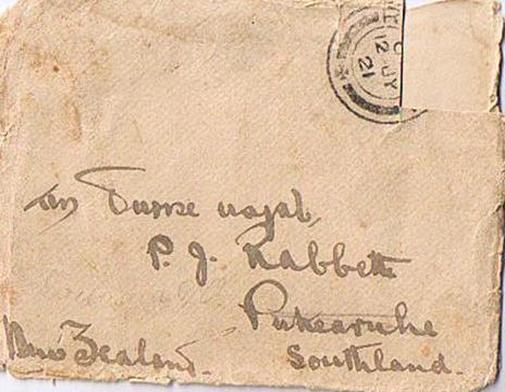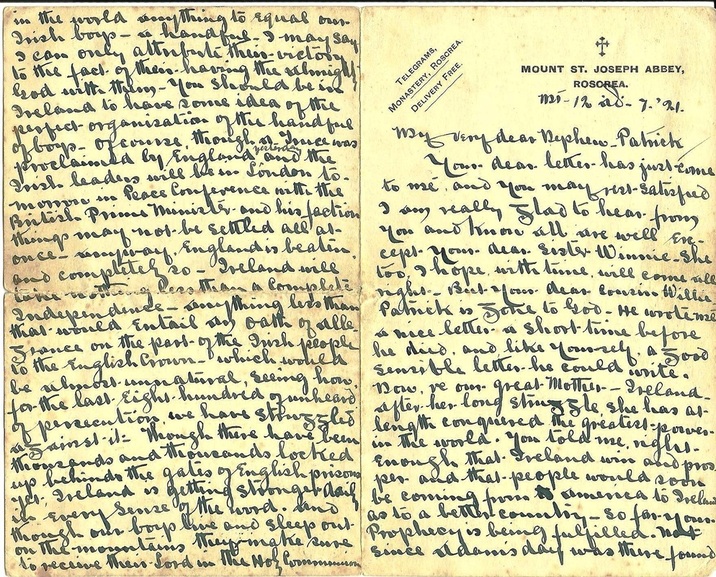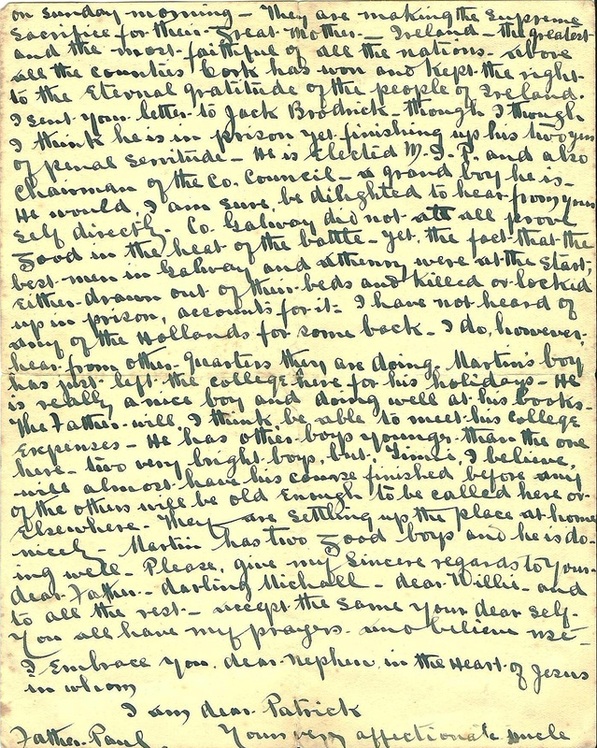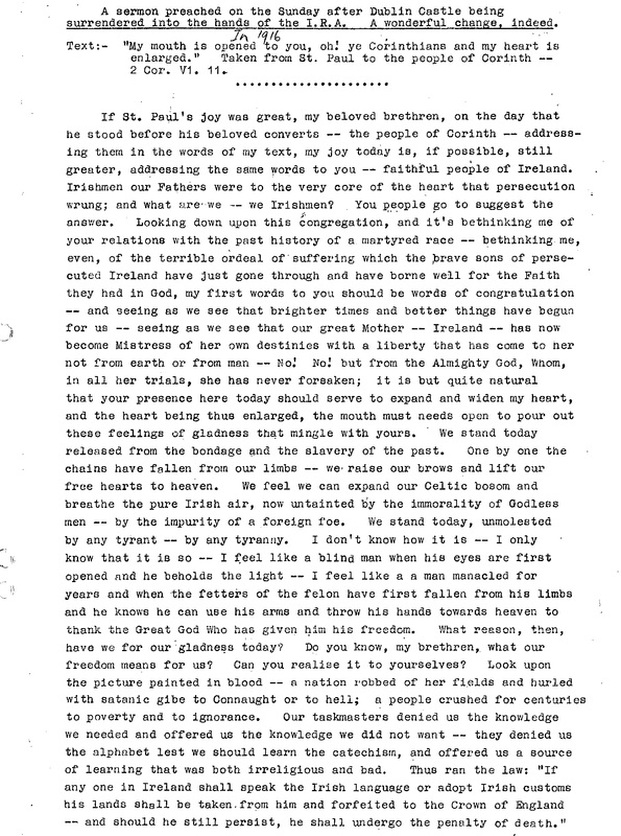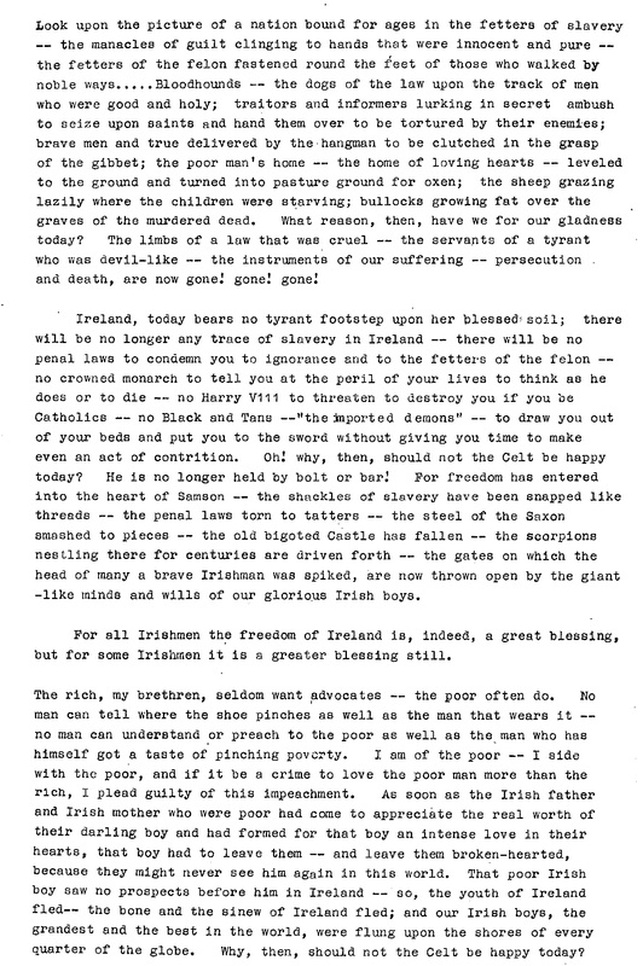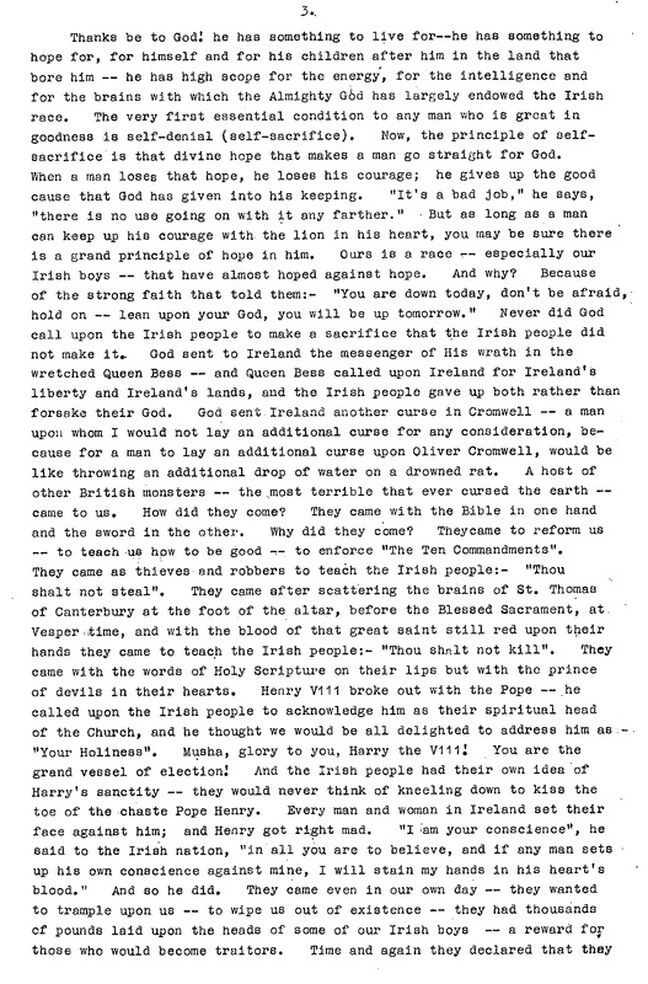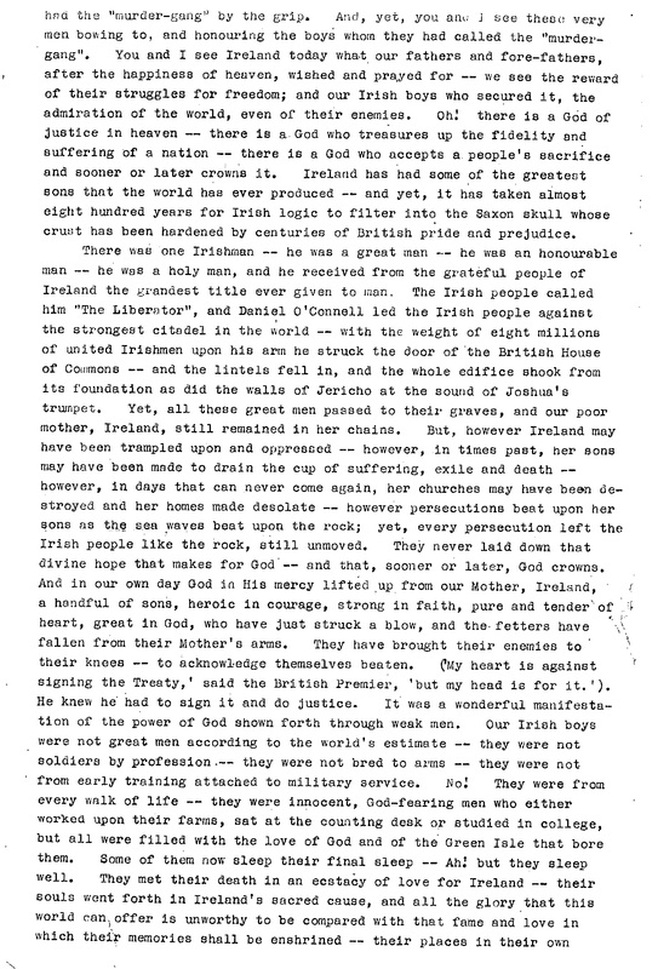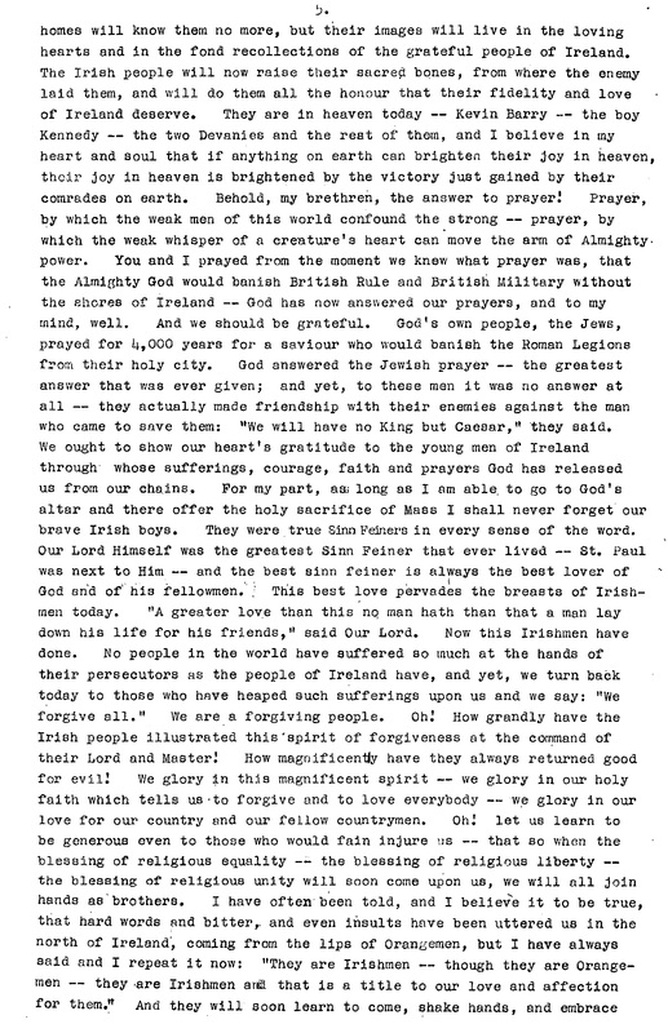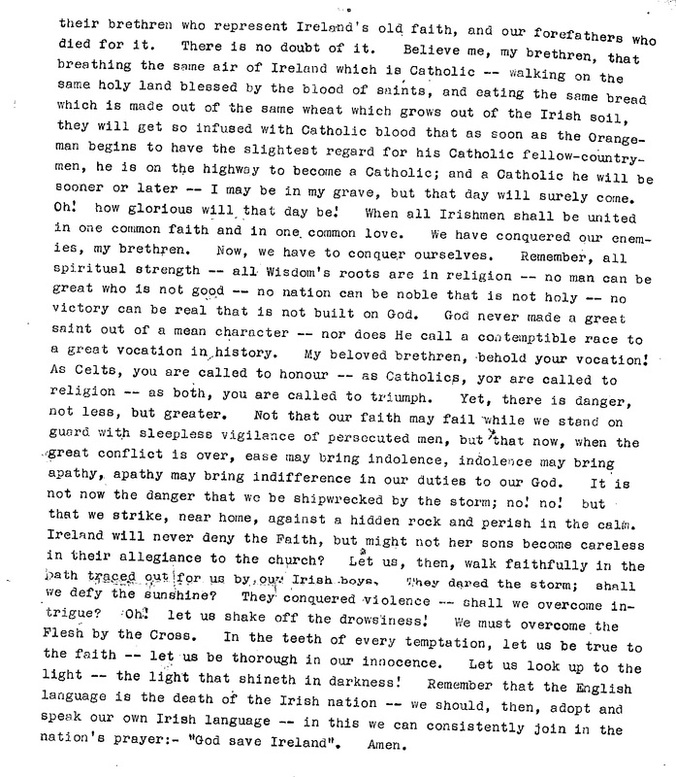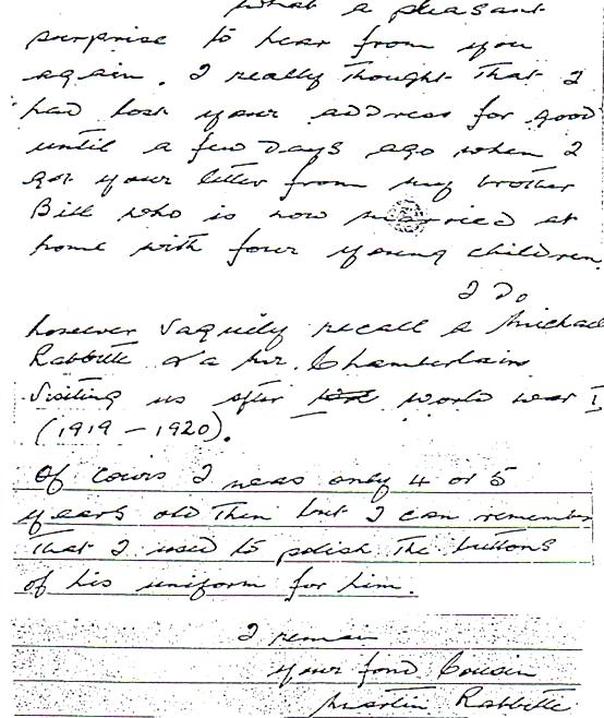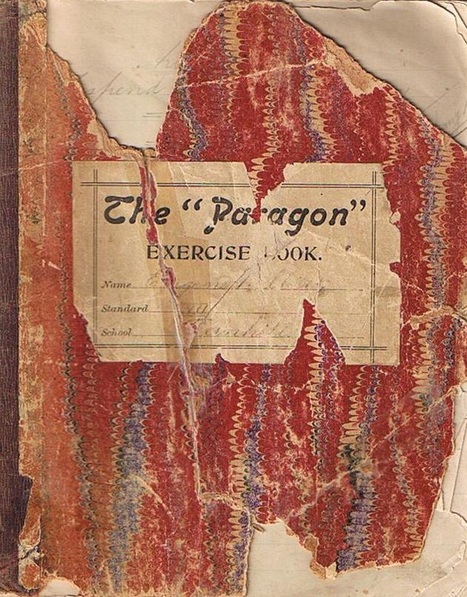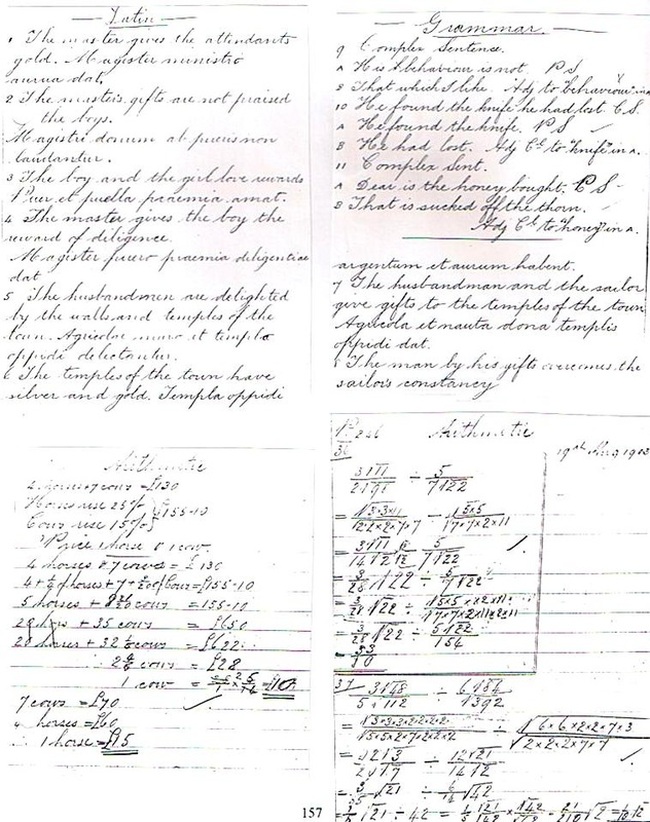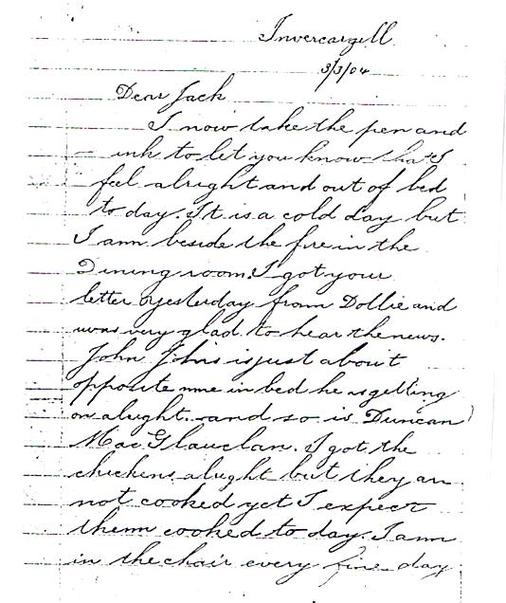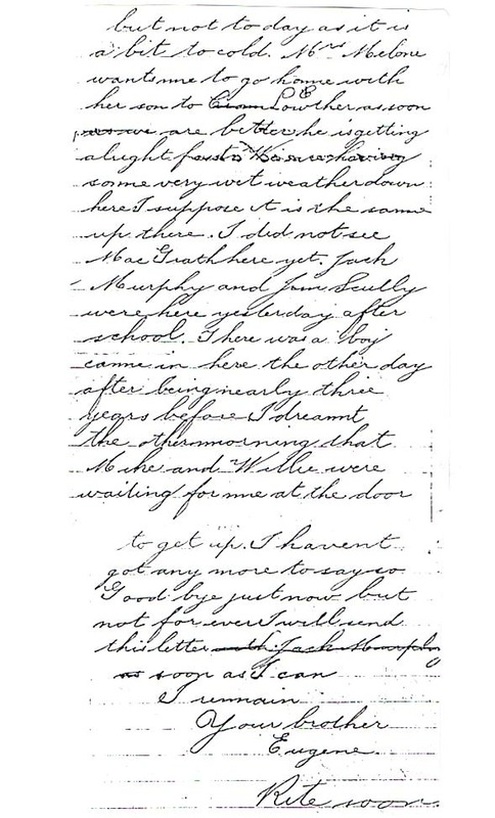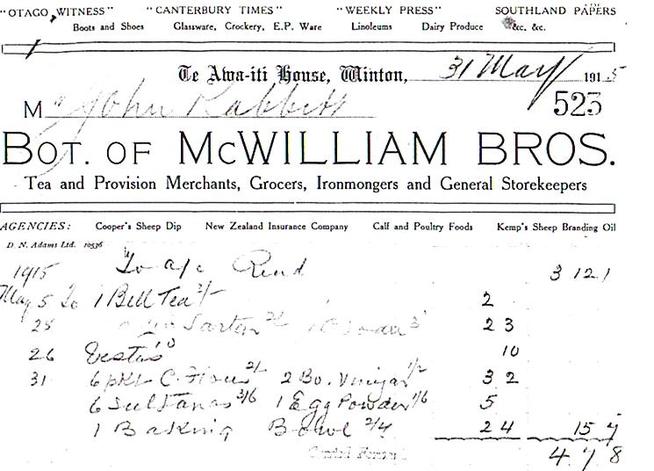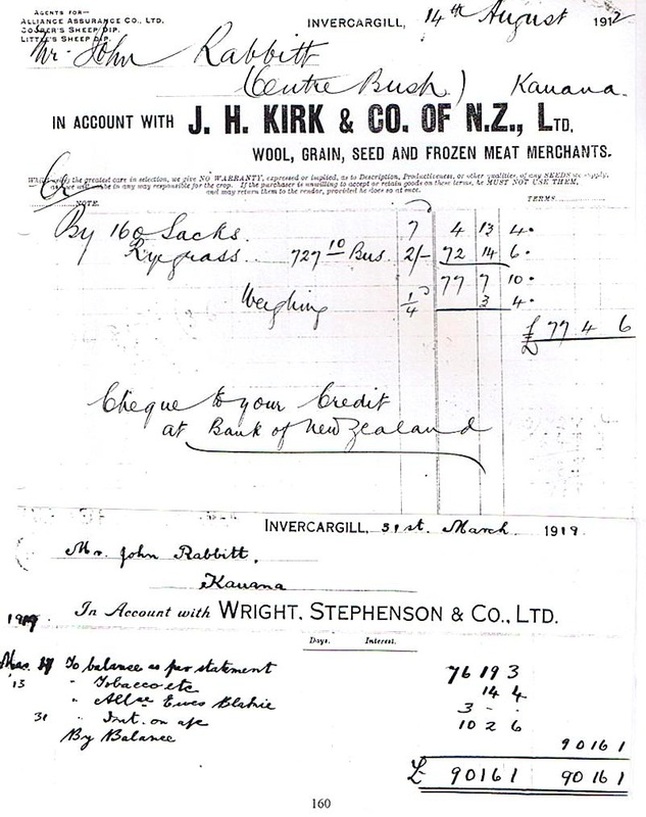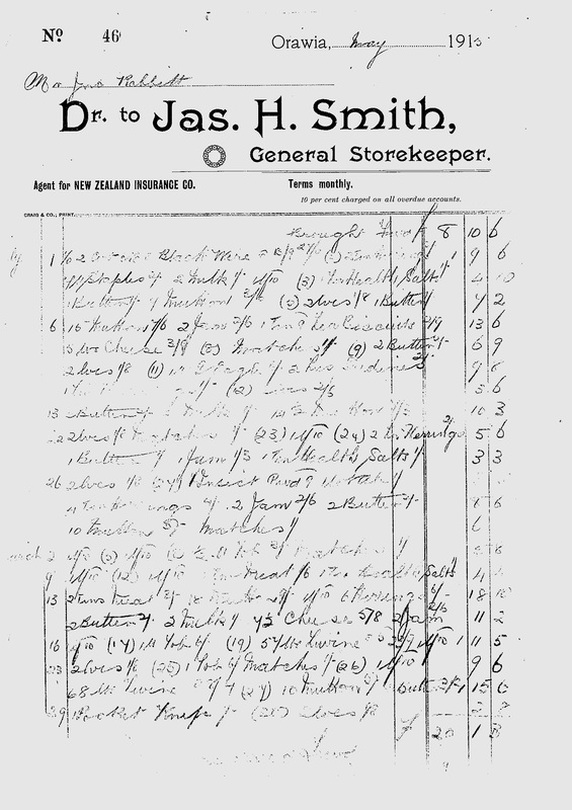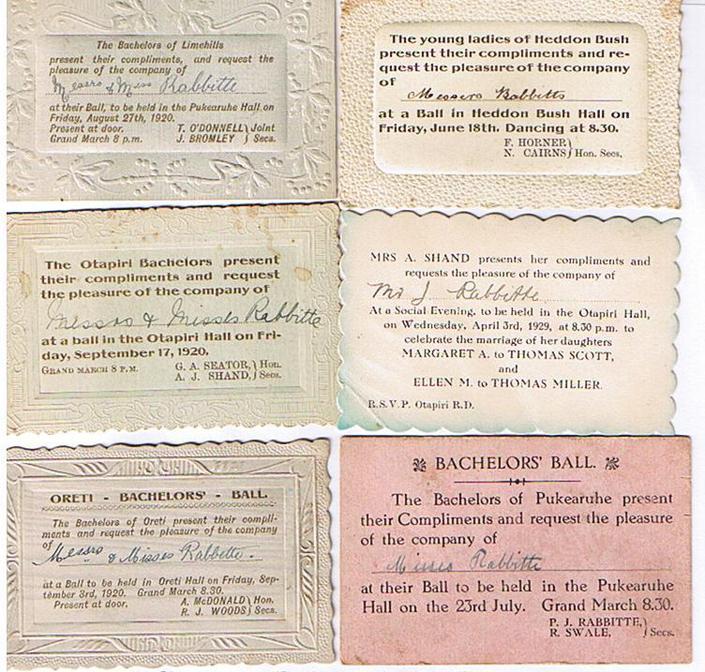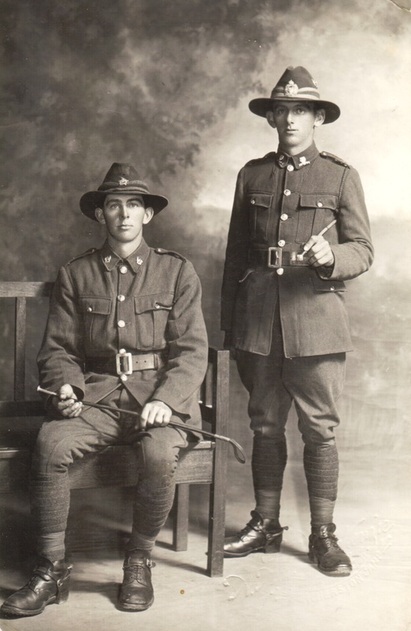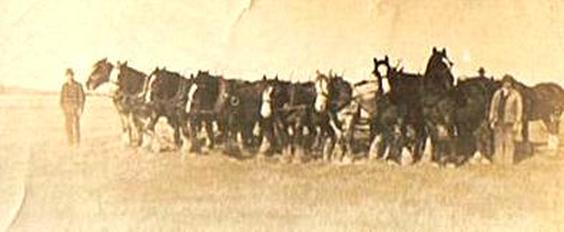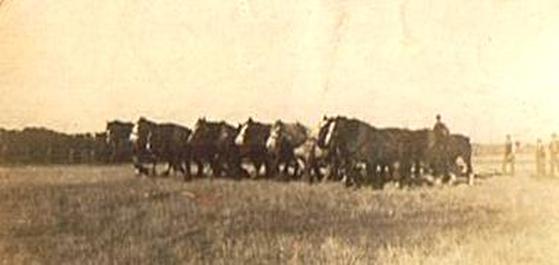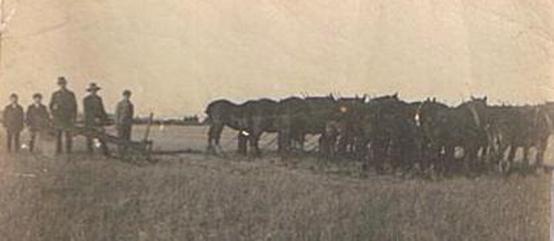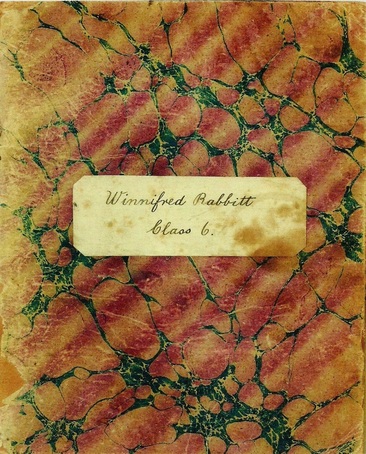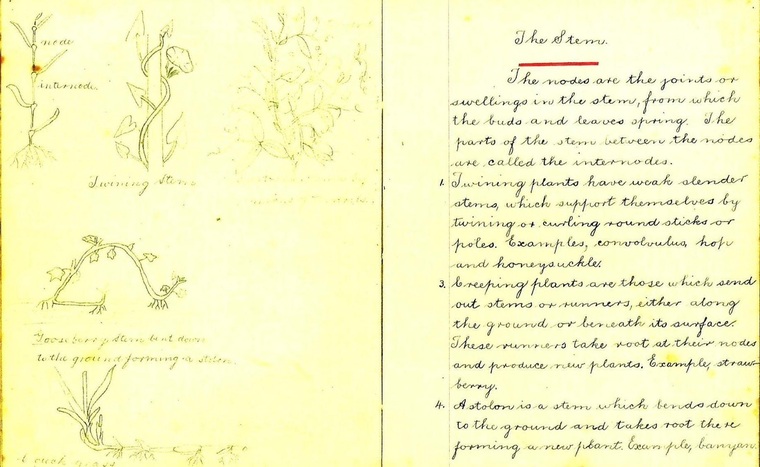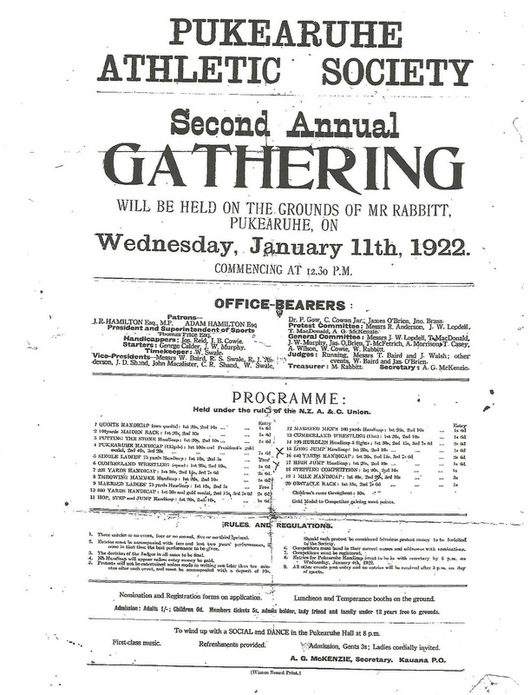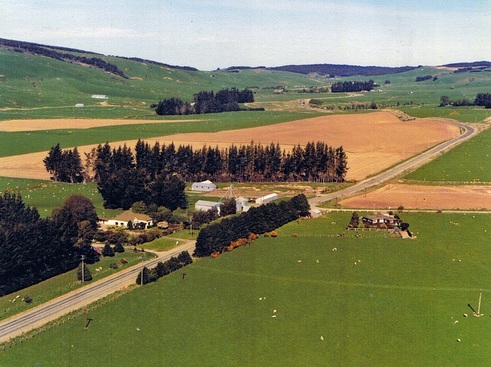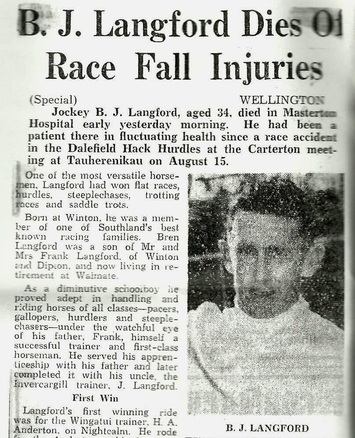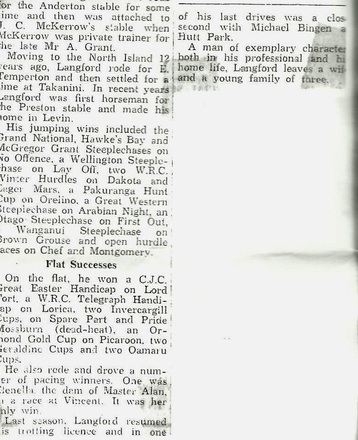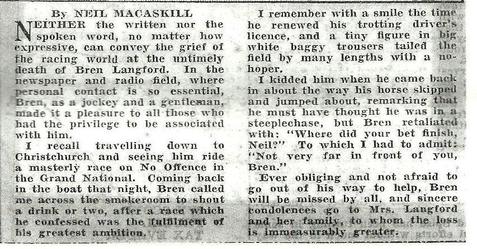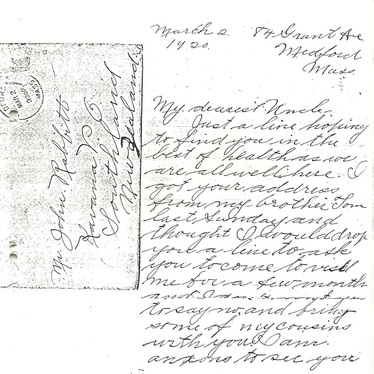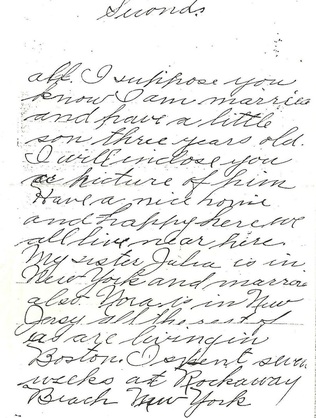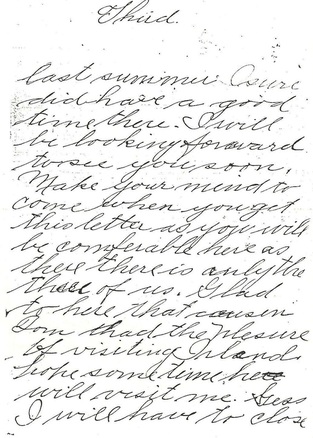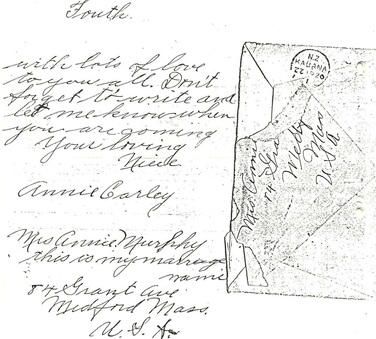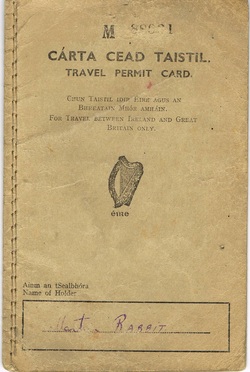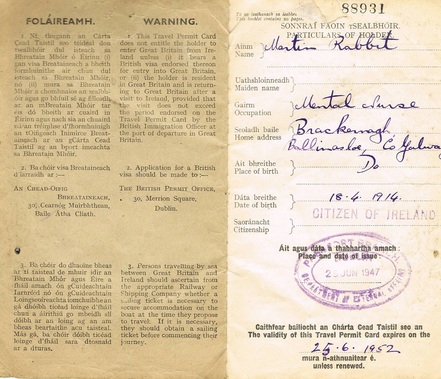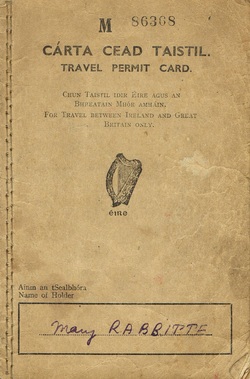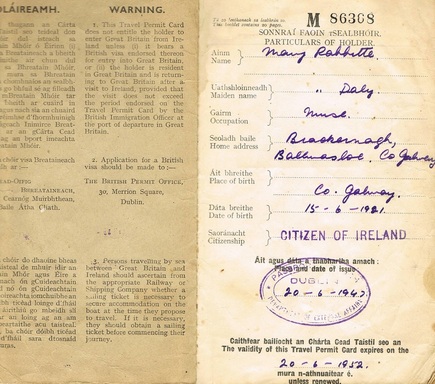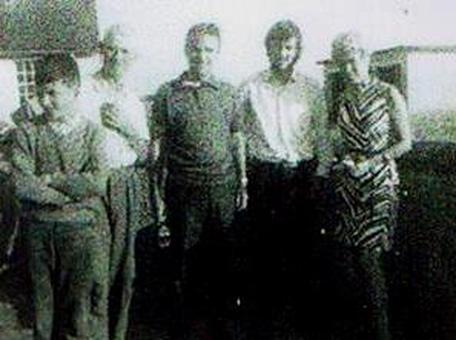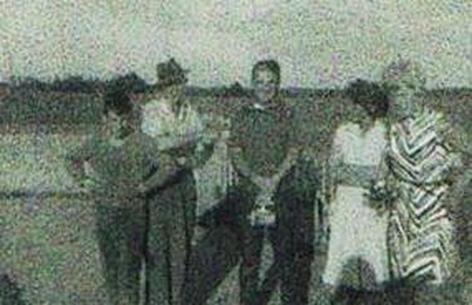Appendices
The appendices to any written work are usually supporting documents required to expand upon points made in the body of the work. For RELATIVELY RABBITT this is only partially true, as these appendices also include material which has not been referred to earlier.
RELATIVELY RABBITT contains a very wide ranging appendices section, which includes some historical and other gems of family history, such as;
- Maps of the Grange area in Galway showing the exact site of the Rabbit home and farm.
- Extracts from letters from family in Ireland.
- A summary of the life of Father Paul
- A sermon preached by Father Paul.
- Pages from a school exercise book dated 1904.
- Rabbitt accounts dating from 1912.
- Rabbitt invitations.
- Horses
- Family group taken at the wedding of Mary Rabbitte and John Thomas McCarthy
The fact that they are included in the appendices is not to undervalue their importance as part of the history of this family.
New Information and DNA.
Earlier it was shown the parents of the three Rabbitt brothers who came to New Zealand from Galway in Ireland, were William Rabbit ( 1823 – 1897) and his wife Bridget ( Nee Golding). From information available it was clear the parents of William (1823 -1897) were John Rabbit ( born 1784) and his wife Margaret. It was also shown the parents of this John were Thaddeus Rabbit (born 1751) and his wife Margaret.
Since then new information from the 1821 Census, which had previously been thought to be lost, has been located. These located papers include information directly relevant to Rabbitt family history. The new information is from the 1821 Census for the Townland of Carnane, in the Parish of Athenry, in County Galway. Carnane was located about 2 miles north of the town of Athenry and consisted of 7 houses. Four of these houses were occupied by members of the Rabbit family. The occupants were;
House Number 2
The Head of House 2 is “Thady Rabbit” aged 70 years, and his occupation is shown as “Farmer and Labourer”. As “Thady” was 70 years of age in 1821, his year of birth is 1751. This confirms information from other sources of a Thaddeus Rabbit born 1751, a farmer and labourer, who is almost certainly a direct ancestor of the Rabbit family being researched.
Other residents of House number 2 were ;
Thomas Rabbit (Son of head of house) aged 30 years Labourer
Michael Rabbit ((Son) of head of house) aged 20 years Labourer
Mary Rabbit ( daughter in law of head of house) aged 25 years
(Note: Mary was the wife of Thomas – as above)
Residents of House number 3 were the following people;
Patrick Rabbit Head of House aged 27. Farmer and Labourer
Mary Rabbit (Wife of Head) aged 25
( Note: Patrick Rabbit is the son of Thady Rabbit head of house in House 2)
Residents of House number 4 were the following people ;
Thomas Rabbit ( Head of House) aged 60 years Farmer
Bridget Rabbit Wife of Head – aged about 40 years
Martin Rabbit Son aged 14 years
Charles Rabbit Son aged 11 years
John Rabbit Son aged 4 years
Rose Rabbit Daughter aged 17 years
Mary Rabbit Daughter aged
Fanny Rabbit Daughter aged
Note: Thomas ( born 1760) is a brother of Thady Rabbit in house 2
.
Residents of house number 5 were the following;
John Rabbit Head of House, aged 37 years
Margaret Rabbit Wife of H o H aged 35 years
Patrick Rabbit Son aged 14 years
Charles Rabbit Son aged 0 years
Catherine Rabbit Daughter aged 11 years
Bridget Rabbit Daughter aged 7 years
Mary Rabbit Daughter aged 2 years
Note: John Rabbit ( the head of house 5) is the eldest son of Thady Rabbitt who is head of house 2.
From the 1821 information it is conclusively shown that;
“Thady” (Thaddeus Rabbit) born in 1751) was still alive in 1821, and was living at Carnane near Athenry in County Galway. As there is no record of his wife it is most likely she is deceased. Also living in the same hamlet were four of Thady’s sons; John (born 1784 with his wife and 5 family), Thomas (born 1791) who was married, Patrick (born 1794] who was married, and Michael (born 1801) who was single. It is from the eldest of these sons (John born 1784) that the Rabbit family line described in Relatively Rabbit has descended.
The Rabbit family shown in House 4 is headed by Thomas (born 1760) and his wife Bridget. There are six children who in 1821 were aged from 14 years to 1 year. The head of house 4, Thomas born 1760 and the head of house 2 Thady born 1751 are believed to be brothers.
Despite advances in technology and the new information it has been impossible to confirm details of any earlier Rabbit family history. Two sources indicate there is a Rabbit family history in Galway extending back over 300 years. The author recalls being told by an Aunt that the Rabbit family name goes back over 300 years in Galway. Also supporting that is a statement about the town of Caraun ( Carnane) in which it is said there are records of a Rabbitt family living there about 300 years ago.
A problem faced by researchers of Irish family history is that surnames were changed when the British authorities took control of Ireland. The British required Irish surnames to be changed to a British equivalent name or a name easier for the British authorities to say and understand.
Google says;
“The Galway Rabbitt’s are descendants of the Mayo clan of O’COININ. In the Irish language Coinin means “rabbit” and it can also be anglicised as Kinnane or Cunnane.” The name COININ is the Gaelic term for the Rabbit surname and in New Zealand some ancestors have said the name CUNNEEN was the family name used at some point in Galway. Both are likely to be correct. With the research tools currently available we are unable to progress this record of the family history beyond this point.
DNA Matching
Over recent years incredible advances have been made in the area of matching DNA and identifying family links through DNA comparisons. Many millions of people have contributed a personal DNA sample for testing and analysis. A highly skilled profession is now available for analysing the DNA results and identifying common ancestry and even close personal family relationships.
The authors have contributed samples for the testing process and identified people with common DNA. The results are staggering in their accuracy, verifying family connections that have taken years of research to establish. Occasionally criticism is directed at the DNA process particularly if unexpected results are obtained. That has not been our experience. Although the results of the 1821 census do not include our ancestor William ( 1823 -1897) that is because he was not born when the census was taken. DNA analysis shows Williams father to be John (born 1794), the head of House 5 in the Carnane 1821 census.
Appendix (i): Local area maps of the Grange area in Galway, where the original Rabbitt brothers to come to New Zealand were born and raised.
After the earlier editions of RELATIVELY RABBITT circulated, much further information was received from overseas sources. The maps, as shown on the next three pages, are an example of this. As pieces of family history these maps are invaluable. The oldest of the maps is dated as at the year 1900. The details on the maps, and the names of the other residents in the Grange town-ship, agree with the information in the letters sent from Grange to family in New Zealand, dating from 1885 onward.
There is no doubt these maps show the scene of our Rabbitt family roots in Ireland, and we are indebted to John Clarke of Castletown in the Isle of Man for this invaluable information. (John Clarke is a relative of Mary Clarke; the wife of Martin Rabbitt, (1865- 1932); a brother of the original New Zealand settlers. The Clarke family home is also in the Grange town-ship, shown on the maps which follow).
RELATIVELY RABBITT contains a very wide ranging appendices section, which includes some historical and other gems of family history, such as;
- Maps of the Grange area in Galway showing the exact site of the Rabbit home and farm.
- Extracts from letters from family in Ireland.
- A summary of the life of Father Paul
- A sermon preached by Father Paul.
- Pages from a school exercise book dated 1904.
- Rabbitt accounts dating from 1912.
- Rabbitt invitations.
- Horses
- Family group taken at the wedding of Mary Rabbitte and John Thomas McCarthy
The fact that they are included in the appendices is not to undervalue their importance as part of the history of this family.
New Information and DNA.
Earlier it was shown the parents of the three Rabbitt brothers who came to New Zealand from Galway in Ireland, were William Rabbit ( 1823 – 1897) and his wife Bridget ( Nee Golding). From information available it was clear the parents of William (1823 -1897) were John Rabbit ( born 1784) and his wife Margaret. It was also shown the parents of this John were Thaddeus Rabbit (born 1751) and his wife Margaret.
Since then new information from the 1821 Census, which had previously been thought to be lost, has been located. These located papers include information directly relevant to Rabbitt family history. The new information is from the 1821 Census for the Townland of Carnane, in the Parish of Athenry, in County Galway. Carnane was located about 2 miles north of the town of Athenry and consisted of 7 houses. Four of these houses were occupied by members of the Rabbit family. The occupants were;
House Number 2
The Head of House 2 is “Thady Rabbit” aged 70 years, and his occupation is shown as “Farmer and Labourer”. As “Thady” was 70 years of age in 1821, his year of birth is 1751. This confirms information from other sources of a Thaddeus Rabbit born 1751, a farmer and labourer, who is almost certainly a direct ancestor of the Rabbit family being researched.
Other residents of House number 2 were ;
Thomas Rabbit (Son of head of house) aged 30 years Labourer
Michael Rabbit ((Son) of head of house) aged 20 years Labourer
Mary Rabbit ( daughter in law of head of house) aged 25 years
(Note: Mary was the wife of Thomas – as above)
Residents of House number 3 were the following people;
Patrick Rabbit Head of House aged 27. Farmer and Labourer
Mary Rabbit (Wife of Head) aged 25
( Note: Patrick Rabbit is the son of Thady Rabbit head of house in House 2)
Residents of House number 4 were the following people ;
Thomas Rabbit ( Head of House) aged 60 years Farmer
Bridget Rabbit Wife of Head – aged about 40 years
Martin Rabbit Son aged 14 years
Charles Rabbit Son aged 11 years
John Rabbit Son aged 4 years
Rose Rabbit Daughter aged 17 years
Mary Rabbit Daughter aged
Fanny Rabbit Daughter aged
Note: Thomas ( born 1760) is a brother of Thady Rabbit in house 2
.
Residents of house number 5 were the following;
John Rabbit Head of House, aged 37 years
Margaret Rabbit Wife of H o H aged 35 years
Patrick Rabbit Son aged 14 years
Charles Rabbit Son aged 0 years
Catherine Rabbit Daughter aged 11 years
Bridget Rabbit Daughter aged 7 years
Mary Rabbit Daughter aged 2 years
Note: John Rabbit ( the head of house 5) is the eldest son of Thady Rabbitt who is head of house 2.
From the 1821 information it is conclusively shown that;
“Thady” (Thaddeus Rabbit) born in 1751) was still alive in 1821, and was living at Carnane near Athenry in County Galway. As there is no record of his wife it is most likely she is deceased. Also living in the same hamlet were four of Thady’s sons; John (born 1784 with his wife and 5 family), Thomas (born 1791) who was married, Patrick (born 1794] who was married, and Michael (born 1801) who was single. It is from the eldest of these sons (John born 1784) that the Rabbit family line described in Relatively Rabbit has descended.
The Rabbit family shown in House 4 is headed by Thomas (born 1760) and his wife Bridget. There are six children who in 1821 were aged from 14 years to 1 year. The head of house 4, Thomas born 1760 and the head of house 2 Thady born 1751 are believed to be brothers.
Despite advances in technology and the new information it has been impossible to confirm details of any earlier Rabbit family history. Two sources indicate there is a Rabbit family history in Galway extending back over 300 years. The author recalls being told by an Aunt that the Rabbit family name goes back over 300 years in Galway. Also supporting that is a statement about the town of Caraun ( Carnane) in which it is said there are records of a Rabbitt family living there about 300 years ago.
A problem faced by researchers of Irish family history is that surnames were changed when the British authorities took control of Ireland. The British required Irish surnames to be changed to a British equivalent name or a name easier for the British authorities to say and understand.
Google says;
“The Galway Rabbitt’s are descendants of the Mayo clan of O’COININ. In the Irish language Coinin means “rabbit” and it can also be anglicised as Kinnane or Cunnane.” The name COININ is the Gaelic term for the Rabbit surname and in New Zealand some ancestors have said the name CUNNEEN was the family name used at some point in Galway. Both are likely to be correct. With the research tools currently available we are unable to progress this record of the family history beyond this point.
DNA Matching
Over recent years incredible advances have been made in the area of matching DNA and identifying family links through DNA comparisons. Many millions of people have contributed a personal DNA sample for testing and analysis. A highly skilled profession is now available for analysing the DNA results and identifying common ancestry and even close personal family relationships.
The authors have contributed samples for the testing process and identified people with common DNA. The results are staggering in their accuracy, verifying family connections that have taken years of research to establish. Occasionally criticism is directed at the DNA process particularly if unexpected results are obtained. That has not been our experience. Although the results of the 1821 census do not include our ancestor William ( 1823 -1897) that is because he was not born when the census was taken. DNA analysis shows Williams father to be John (born 1794), the head of House 5 in the Carnane 1821 census.
Appendix (i): Local area maps of the Grange area in Galway, where the original Rabbitt brothers to come to New Zealand were born and raised.
After the earlier editions of RELATIVELY RABBITT circulated, much further information was received from overseas sources. The maps, as shown on the next three pages, are an example of this. As pieces of family history these maps are invaluable. The oldest of the maps is dated as at the year 1900. The details on the maps, and the names of the other residents in the Grange town-ship, agree with the information in the letters sent from Grange to family in New Zealand, dating from 1885 onward.
There is no doubt these maps show the scene of our Rabbitt family roots in Ireland, and we are indebted to John Clarke of Castletown in the Isle of Man for this invaluable information. (John Clarke is a relative of Mary Clarke; the wife of Martin Rabbitt, (1865- 1932); a brother of the original New Zealand settlers. The Clarke family home is also in the Grange town-ship, shown on the maps which follow).
1985 Drawing of Farm land and Households within the Grange area.
The following local area map shows the Grange district as it was in 1985.
It will be noted the surnames of many of the residents are the same as those in the area many years previously. These details were provided by Mr John Clarke, and it will be noted the Clarke family name is still present in the Grange area in the 1985 map.
The Martin Rabbitt shown to on the map is a grandson of Martin Rabbitt (1865- 1932).
The following local area map shows the Grange district as it was in 1985.
It will be noted the surnames of many of the residents are the same as those in the area many years previously. These details were provided by Mr John Clarke, and it will be noted the Clarke family name is still present in the Grange area in the 1985 map.
The Martin Rabbitt shown to on the map is a grandson of Martin Rabbitt (1865- 1932).
Appendix (ii) 1901 Census for the Lackagh District:
Among the earliest surviving Irish Census records are those for the census taken in 1901. The following shows the details recorded for the Grange East area. Note in particular, the entry for Bridget Rabbitt. This is the mother of the New Zealand settlers. Also recorded is her youngest son William, who later was to emigrate to New Zealand. The Delia "Carlos", who is recorded as a grand daughter of the above Bridget Rabbitt is thought to be incorrect - probably the correct name should be Delia Corley, the daughter of Mary Corley (nee Rabbitt); 1863-1896.
The following extract from the census is interesting as it records the names of other Rabbitt families resident in the area, and the names of their neighbours.
Among the earliest surviving Irish Census records are those for the census taken in 1901. The following shows the details recorded for the Grange East area. Note in particular, the entry for Bridget Rabbitt. This is the mother of the New Zealand settlers. Also recorded is her youngest son William, who later was to emigrate to New Zealand. The Delia "Carlos", who is recorded as a grand daughter of the above Bridget Rabbitt is thought to be incorrect - probably the correct name should be Delia Corley, the daughter of Mary Corley (nee Rabbitt); 1863-1896.
The following extract from the census is interesting as it records the names of other Rabbitt families resident in the area, and the names of their neighbours.
Appendix (iii)
This letter dated 1 October 1885, was written by Bridget Holland nee Rabbit (1868 – 1948), a sister of the New Zealand settlers. The letter is written to her oldest brother John Rabbit (1855 - 1941). At this stage John was living at Kauana, New Zealand.
Significant points made in the letter include the following facts;
This letter is included in the appendices, as an example of several letters that have survived in family possession for over 100 years. Without these letters the reconstruction of much of the earlier family history would not have been possible.
This letter dated 1 October 1885, was written by Bridget Holland nee Rabbit (1868 – 1948), a sister of the New Zealand settlers. The letter is written to her oldest brother John Rabbit (1855 - 1941). At this stage John was living at Kauana, New Zealand.
Significant points made in the letter include the following facts;
- John was married by this date.
- Thaddy (Timothy) has by this time left home "to join the monks."
- John's brother, Patrick, was in New Zealand by this time.
- The family of John’s wife (Mary Scully) were known to the Rabbit family in Ireland.
- John had purchased land at Fernhills, in Southland.
This letter is included in the appendices, as an example of several letters that have survived in family possession for over 100 years. Without these letters the reconstruction of much of the earlier family history would not have been possible.
Appendix (iv) First Cousin of Bridget Rabbit, nee Golding:
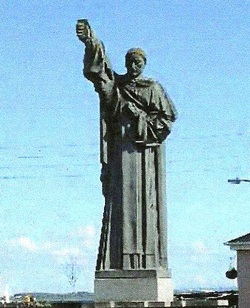
Thomas Nicholas Burke 1830 -1882
This statue is in Galway City.
Thomas Nicholas Burke was the son of Margaret (nee McDonagh) and Walter Burke. Thomas Burke’s mother was the aunt of Bridget Rabbit, (nee Golding,), the mother of the New Zealand settlers.
Thomas was born in Galway on 8 September 1830. Although his parents were in moderate circumstances they gave him a good education. Toward the end of 1847 he asked to be received into the Order of Preachers, and was sent to Perugia in Italy to make his novitiate. On 29 December he was clothed there in the habit of St Dominic and received the name Thomas. Shortly after, he was sent to Rome to begin his studies in the Convent of the Minerva. He was ordained a priest on 26 March1853. Early in the following year Father Thomas was recalled to Ireland to found the novitiate of the Irish Province at Tallaght near Dublin. He went to Rome again in 1864 as Rector of the Dominican Convent of San Clemente, and attracted great attention in the Eternal City by his preaching. He returned to Ireland in 1867 and delivered his oration on O’Connell at Glasnevin before 50,000 people. Bishop Leahy took him as his theologian to the Vatican Council in 1870 and the following year he was sent as Visitor to the Dominican Convents in America. His fame preceded him and he was besieged with requests to preach and lecture. In 18 months he gave 400 lectures, the proceeds amounting to nearly $400,000. His mission was a triumph but when he arrived in Ireland in March 1873, he was spent and broken. Yet for the next 10 years he preached continually in Ireland, England, and Scotland. In June 1882, he returned to Tallaght in a dying condition and preached his last sermon in the Jesuit church, Dublin, in aid of the starving children of Donegal. Father Burke possessed all the qualities of a great orator, a rich flexible, harmonious voice, great dramatic power, and a vivid imagination. He is buried in Dublin.
Appendix (v)
The following remarkable summary of Father Paul’s life was written by Brother Camillus Claffy, who was Abbot at Roscrea from 1944 until 1962.
Thomas Nicholas Burke was the son of Margaret (nee McDonagh) and Walter Burke. Thomas Burke’s mother was the aunt of Bridget Rabbit, (nee Golding,), the mother of the New Zealand settlers.
Thomas was born in Galway on 8 September 1830. Although his parents were in moderate circumstances they gave him a good education. Toward the end of 1847 he asked to be received into the Order of Preachers, and was sent to Perugia in Italy to make his novitiate. On 29 December he was clothed there in the habit of St Dominic and received the name Thomas. Shortly after, he was sent to Rome to begin his studies in the Convent of the Minerva. He was ordained a priest on 26 March1853. Early in the following year Father Thomas was recalled to Ireland to found the novitiate of the Irish Province at Tallaght near Dublin. He went to Rome again in 1864 as Rector of the Dominican Convent of San Clemente, and attracted great attention in the Eternal City by his preaching. He returned to Ireland in 1867 and delivered his oration on O’Connell at Glasnevin before 50,000 people. Bishop Leahy took him as his theologian to the Vatican Council in 1870 and the following year he was sent as Visitor to the Dominican Convents in America. His fame preceded him and he was besieged with requests to preach and lecture. In 18 months he gave 400 lectures, the proceeds amounting to nearly $400,000. His mission was a triumph but when he arrived in Ireland in March 1873, he was spent and broken. Yet for the next 10 years he preached continually in Ireland, England, and Scotland. In June 1882, he returned to Tallaght in a dying condition and preached his last sermon in the Jesuit church, Dublin, in aid of the starving children of Donegal. Father Burke possessed all the qualities of a great orator, a rich flexible, harmonious voice, great dramatic power, and a vivid imagination. He is buried in Dublin.
Appendix (v)
The following remarkable summary of Father Paul’s life was written by Brother Camillus Claffy, who was Abbot at Roscrea from 1944 until 1962.
Appendix (vi)
This is a 1917 message written by Father Paulto Michael Clarke, a resident of the Grange town-ship in Galway, where the Rabbitt and Clarke families were neighbours. It appears Michael Clarke received his First Communion from Father Paul, and the message was written to Michael along with a "case of Sacred Relics".
This is a 1917 message written by Father Paulto Michael Clarke, a resident of the Grange town-ship in Galway, where the Rabbitt and Clarke families were neighbours. It appears Michael Clarke received his First Communion from Father Paul, and the message was written to Michael along with a "case of Sacred Relics".
Appendix (vii)
This is a letter from Father Paul; (Timothy Rabbit, 1863-1940), to his nephew Patrick James Rabbitte, (1896 - 1962). The letter dated 12 July 1921, is from the Mount St. Joseph Abbey, at Roscrea and is addressed to Patrick at Pukearuhe, Southland. A picture of the addressed envelope is included at the bottom of this page.
Family references in the letter include;
a reference to the death of Patrick's cousin, William Rabbitt, who died in December 1920. (This was William Thomas Rabbitt, the oldest child of Patrick and Norah Rabbitt, of Wairuna in South Otago.) It can be taken from the letter that William had also been in correspondence with Father Paul.
a reference to the illness of Patrick's sister Winnie, (Winifred) who at that time was suffering from tuberculosis. (Winnie died on 18th August 1921, just five weeks after the date of this letter.)
the reference in the letter to the Holland family, refers to the family of Bridget Holland; (nee Rabbit), i.e; Fathers Paul's younger sister.
a reference to the family of Martin Rabbitt - Father Paul's brother. Reference is made to Martin's sons and particularly to TIMIS, whose health failed while studying for the priesthood. This person is referred to earlier in this review, by the given name of Timothy - later Brother Enda.
The letter makes it clear Patrick James Rabbitte and Father Paul had been in earlier written communication and it would appear that they had actually met. This was probably when Patrick was in Ireland at the end of World War I. It is also clear they shared an interest in the Irish struggles for complete independence from England.
This is a letter from Father Paul; (Timothy Rabbit, 1863-1940), to his nephew Patrick James Rabbitte, (1896 - 1962). The letter dated 12 July 1921, is from the Mount St. Joseph Abbey, at Roscrea and is addressed to Patrick at Pukearuhe, Southland. A picture of the addressed envelope is included at the bottom of this page.
Family references in the letter include;
a reference to the death of Patrick's cousin, William Rabbitt, who died in December 1920. (This was William Thomas Rabbitt, the oldest child of Patrick and Norah Rabbitt, of Wairuna in South Otago.) It can be taken from the letter that William had also been in correspondence with Father Paul.
a reference to the illness of Patrick's sister Winnie, (Winifred) who at that time was suffering from tuberculosis. (Winnie died on 18th August 1921, just five weeks after the date of this letter.)
the reference in the letter to the Holland family, refers to the family of Bridget Holland; (nee Rabbit), i.e; Fathers Paul's younger sister.
a reference to the family of Martin Rabbitt - Father Paul's brother. Reference is made to Martin's sons and particularly to TIMIS, whose health failed while studying for the priesthood. This person is referred to earlier in this review, by the given name of Timothy - later Brother Enda.
The letter makes it clear Patrick James Rabbitte and Father Paul had been in earlier written communication and it would appear that they had actually met. This was probably when Patrick was in Ireland at the end of World War I. It is also clear they shared an interest in the Irish struggles for complete independence from England.
Appendix: (viii)
This remarkable document is a copy of a sermon preached by Father Paul; (Timothy Rabbitt, 1863 - 1940), at the time of the surrender of Dublin Castle into the hands of the Irish Republican Army. That this document has survived, is another example of the value the Rabbitt family has placed on its ancestry. The value of this document is not so much in its contents, or its relevance to the Rabbitt family history, but in the fact that it survives as a piece of Father Paul's work. Those wishing to confirm Father Paul's commitment to his church, to all things Irish, and to the cause of Irish independence, will be convinced of this after reading the sermon!!
It has been included in full as the authors think this is an important document in the family history.
This remarkable document is a copy of a sermon preached by Father Paul; (Timothy Rabbitt, 1863 - 1940), at the time of the surrender of Dublin Castle into the hands of the Irish Republican Army. That this document has survived, is another example of the value the Rabbitt family has placed on its ancestry. The value of this document is not so much in its contents, or its relevance to the Rabbitt family history, but in the fact that it survives as a piece of Father Paul's work. Those wishing to confirm Father Paul's commitment to his church, to all things Irish, and to the cause of Irish independence, will be convinced of this after reading the sermon!!
It has been included in full as the authors think this is an important document in the family history.
Appendix (ix)
The following is an extract from a 1959 letter written by Martin Rabbitte Jnr, ( Mattie), (1914-1978), to cousins in New Zealand.
Martin is the youngest of the five sons of Martin Rabbitt, (1865- 1932) of Turloughmore in Galway, and he is therefore a nephew of the original three Rabbitt brothers who settled in New Zealand. Martin went to London and he was living there when this letter was written on 12 October, 1959.
This particular extract has been chosen as it confirms the details written earlier in this review, of Martin recalling polishing the buttons on the military uniform of Michael Rabbitt, (1887-1945); when he visited the family in Ireland, after World War I.
The following is an extract from a 1959 letter written by Martin Rabbitte Jnr, ( Mattie), (1914-1978), to cousins in New Zealand.
Martin is the youngest of the five sons of Martin Rabbitt, (1865- 1932) of Turloughmore in Galway, and he is therefore a nephew of the original three Rabbitt brothers who settled in New Zealand. Martin went to London and he was living there when this letter was written on 12 October, 1959.
This particular extract has been chosen as it confirms the details written earlier in this review, of Martin recalling polishing the buttons on the military uniform of Michael Rabbitt, (1887-1945); when he visited the family in Ireland, after World War I.
Appendix (x)
Extracts from the 1903 school exercise book of Eugene Rabbitt (1890- 1904).
This is another document to have miraculously survived the over 100 years since the since the book was in use. The book cover shows that Eugene was in Standard 7, and he was a pupil of Fernhills School. He was about 13 years of age when this work was completed.
The following is a copy of the cover of the book, and this is followed by some examples of his written school work.
Extracts from the 1903 school exercise book of Eugene Rabbitt (1890- 1904).
This is another document to have miraculously survived the over 100 years since the since the book was in use. The book cover shows that Eugene was in Standard 7, and he was a pupil of Fernhills School. He was about 13 years of age when this work was completed.
The following is a copy of the cover of the book, and this is followed by some examples of his written school work.
Appendix (xi)
This letter dated 3 March 1904, is written by Eugene Rabbitt (1890 - 1904), to his older brother Jack. The letter was written while Eugene was a patient in hospital in Invercargill, and it was written only three weeks before Eugene's death.
This letter dated 3 March 1904, is written by Eugene Rabbitt (1890 - 1904), to his older brother Jack. The letter was written while Eugene was a patient in hospital in Invercargill, and it was written only three weeks before Eugene's death.
Appendix (xii)
These are copies of accounts dating from 1912 in the name of John Rabbit, the first of the brothers to settle in New Zealand. Apparently the papers had been located in a farm building on Rabbitt land at Kauana. They were provided by the Maurice Rabbitt , son of Michael, son of John..
The accounts are interesting in that they show some of the day to day items that were required in those times, and the costs of the various items. The accounts of Jas.H.Smith, General Storekeeper of Orawia, near Merivale, are also interesting in that they date from May 1915, which proves that from at least that date, John was the owner of land in that district. (This was the land later farmed by his son John Thomas Rabbitt; (1888 - 1958).
These are copies of accounts dating from 1912 in the name of John Rabbit, the first of the brothers to settle in New Zealand. Apparently the papers had been located in a farm building on Rabbitt land at Kauana. They were provided by the Maurice Rabbitt , son of Michael, son of John..
The accounts are interesting in that they show some of the day to day items that were required in those times, and the costs of the various items. The accounts of Jas.H.Smith, General Storekeeper of Orawia, near Merivale, are also interesting in that they date from May 1915, which proves that from at least that date, John was the owner of land in that district. (This was the land later farmed by his son John Thomas Rabbitt; (1888 - 1958).
Appendix (xiii)
Set out below are examples of invitations to weddings/balls etc; which were sent to various members of the Rabbitt family, during a period from as early as 1913, through to 1929. Unfortunately some of the invitations are undated, which rather spoils their value for family history purposes, but they are worth recording, and again the remarkable thing is that they have survived the intervening years.
Set out below are examples of invitations to weddings/balls etc; which were sent to various members of the Rabbitt family, during a period from as early as 1913, through to 1929. Unfortunately some of the invitations are undated, which rather spoils their value for family history purposes, but they are worth recording, and again the remarkable thing is that they have survived the intervening years.
Appendix (xiv) Rabbitt Cousins in service:
The following photograph shows two Rabbitt family cousins taken before their departure in 1917 for service in World War 1. They are Patrick James Rabbitte (seated) ( son of John 1855- 1941), and his cousin William Thomas Rabbitt, ( son of Patrick 1858 – 1924) Remarkably this photo was not found until 2010 when it was discovered on the website of the New Zealand Mounted Rifles Association..
The following photograph shows two Rabbitt family cousins taken before their departure in 1917 for service in World War 1. They are Patrick James Rabbitte (seated) ( son of John 1855- 1941), and his cousin William Thomas Rabbitt, ( son of Patrick 1858 – 1924) Remarkably this photo was not found until 2010 when it was discovered on the website of the New Zealand Mounted Rifles Association..
The photo was taken in Featherston while the cousins were training there, and was probably taken shortly before their departure for service overseas in 1917.
Appendix (xv) Rabbitt family and horses.
This review of the early Rabbitt family in New Zealand during the sixty year period; (1880-1940); would not be complete without acknowledging their strong involvement with horses. Our pioneering ancestors were always fully involved with horses, both from a practical work point of view, and for enjoyment and riding. (This interest is still present in the family.) Earlier in this review, there is an excellent turn of the century photograph of John Rabbitt working with a team of horses. The following are some very valuable photographs of 16 horse teams with which the Rabbitt family was associated in the Fernhills/Kauana district. Apparently during the 1920's and the early 1930's, 16 horse teams were used to drain plough the land - most farmers had at least a 6 horse team, and the locals pooled their teams for the drain ploughing jobs. (This task was also called "mole ploughing". It was not until about the mid 1930's that the task was taken over by crawler tractors.) The following are photographs of 16 horse teams at work in the in the Fernhills/Kauana district. It is believed the people in the pictures are members of the Rabbitt and Anderson families of Kauana.
This review of the early Rabbitt family in New Zealand during the sixty year period; (1880-1940); would not be complete without acknowledging their strong involvement with horses. Our pioneering ancestors were always fully involved with horses, both from a practical work point of view, and for enjoyment and riding. (This interest is still present in the family.) Earlier in this review, there is an excellent turn of the century photograph of John Rabbitt working with a team of horses. The following are some very valuable photographs of 16 horse teams with which the Rabbitt family was associated in the Fernhills/Kauana district. Apparently during the 1920's and the early 1930's, 16 horse teams were used to drain plough the land - most farmers had at least a 6 horse team, and the locals pooled their teams for the drain ploughing jobs. (This task was also called "mole ploughing". It was not until about the mid 1930's that the task was taken over by crawler tractors.) The following are photographs of 16 horse teams at work in the in the Fernhills/Kauana district. It is believed the people in the pictures are members of the Rabbitt and Anderson families of Kauana.
Appendix (xvi)
School Book of Winifred Rabbitt (1901-1921) Class 6. It can be assumed that this is Standard 6 as it is known that none of the children of John & Mary Rabbitt went to Secondary School.
School Book of Winifred Rabbitt (1901-1921) Class 6. It can be assumed that this is Standard 6 as it is known that none of the children of John & Mary Rabbitt went to Secondary School.
Appendix (xvii)
This 1922 event was held on the property of Michael Rabbitt ( 1887 – 1945) at Pukearuhe. It is remarkable the poster should have survived and it says a lot about the character of the local community that it was able to work together to arrange such an event. The names of our Rabbitt forebears will be seen among the office bearers.
This 1922 event was held on the property of Michael Rabbitt ( 1887 – 1945) at Pukearuhe. It is remarkable the poster should have survived and it says a lot about the character of the local community that it was able to work together to arrange such an event. The names of our Rabbitt forebears will be seen among the office bearers.
Appendix (xviii)
The above shows the area at Merrivale purchased firstly by John Rabbit (1855 – 1941).
The land was purchased from “Luscombes” and possession had been taken by July 1914.
The land passed to John’s son, John Thomas Rabbitt (1888 – 1958).
Subsequently the land passed to John Thomas’ son, also called John.
Appendix (xix)
Brendon Langford - died in 1964 - was the son of Bridget Langford, nee Rabbitt) and Frank Langford. He was a nationally successful and well known horseman who died as a result of injuries from a fall from a horse during a steeplechase event. He was one of the few New Zealand horsemen to ride/drive winners in the steeplechase, flat racing, and trotting events.
The land was purchased from “Luscombes” and possession had been taken by July 1914.
The land passed to John’s son, John Thomas Rabbitt (1888 – 1958).
Subsequently the land passed to John Thomas’ son, also called John.
Appendix (xix)
Brendon Langford - died in 1964 - was the son of Bridget Langford, nee Rabbitt) and Frank Langford. He was a nationally successful and well known horseman who died as a result of injuries from a fall from a horse during a steeplechase event. He was one of the few New Zealand horsemen to ride/drive winners in the steeplechase, flat racing, and trotting events.
Appendix (xx)
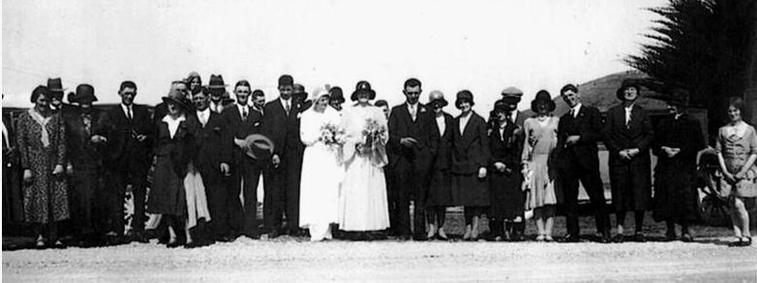
From Left to Right. : _, Mary Rabbitt ( Going), _, _, Michael Rabbitt (brides cousin), Margaret Gill ( Brides friend), Michael Rabbitte ( brides brother), John Rabbitte ( Brides brother), John and Mary McCarthy ( bride and groom), Delia Rabbitte, ( brides maid and sister), Hugh McHugh( best man), Jessie Doherty, Gwen Doherty, Lillian Moylan, James
Moylan, (in cap), _, Patrick Rabbitte ( brides cousin), Nora Rabbitte ( brides mother), Norah Rabbitt ( brides Aunt from Clinton), Patricia ( brides sister).
It is believed that the man with the hat behind Michael and John is the brides father William Rabbitte and the man behind Margaret Gill is John Rabbitt (Uncle of the Bride.).
The woman standing at the rear between the brides father, and John Rabbitt is Bridget Langford ( brides cousin) .
Appendix (xxi)
A 1920 letter from Annie Corley (married name Murphy) living in America, to her uncle John Rabbitt ( 1855- 1941) in Kauana, NZ.
A 1920 letter from Annie Corley (married name Murphy) living in America, to her uncle John Rabbitt ( 1855- 1941) in Kauana, NZ.
Appendix (xxii)
These are travel permit cards used by Mattie and Mamie Rabbitt for their Ireland/England travels.
These are travel permit cards used by Mattie and Mamie Rabbitt for their Ireland/England travels.
MISSING LINKS
The problem of tracing the American descendants of Mary Rabbitt, (1859 – 1896) has now been mainly solved. Contact has been made with Mary’s great granddaughter Laurel who has helped with the research into this branch of the family.
Laurel is the niece of Theodore Curley who visited Coldwood, Galway in 1968, and met with residents who recalled the Corley family living at Coldwood, before they went to live in America. Theodore (Ted) Curley wrote the following recollections of this visit and meeting the people of Coldwood.
“ I met a man named Peter Jennings, who lived next door to the Carley’s old house. His address is Peter and Maureen Jennings, Coldwood Village, Craughwell, County Galway. He remembered hearing stories of the Carley family. He took us to the remains of the Carley’s house, where only the remnants of the foundation could be seen. The area was all grown over now. I was just able to determine the shape of the front stoop, which was still intact (well worn limestone). I had Mr Jennings break off a piece of the stoop to bring home.
Mr Jennings also showed us the old “Carley” well. Legend has it that while trying to remove a huge boulder; an earlier Carley discovered a deep hole. An investigation proved to unearth an excellent natural well, which was very deep. Steps were built down to the water, and people came from miles around for Carley’s well water.
Legend also has it that the Carley’s over the years ran a “shiobeen” which in the U.S. is the equivalent to bootlegging. Mr Jennings also recounted that old Mr Carley ( my grandfather) took off to the US leaving his children behind ( around 6 children). Mrs Carley had already passed away. Mr Jennings mother along with others in the village pitched in to help the children, when they learned that the only food in the house was a sack of horse meal. One by one the children eventually left. Tom Carley was the last to leave. Mr Jennings indicated that some of the Carley relatives came for some of the children.
After chatting a while Mr Jennings suggested we go and see Mr John Kelly, who was the village elder statesman, (77 years old), John and Moria ( Cummings) Kelly were a delightful elderly couple. After some difficulty introducing ourselves, Mrs Kelly finally blurted out of course I knew Tommy Carley, I went to school with him. The Kellys indicated that Tommy was a hard worker and a good student. Despite more than a half century time lapse they rattled off all the children’s names ( Debra, Pat, Willie, Annie, Norah, Julia etc). It was if it was yesterday. They told us John Holland aged 60, is my fathers first cousin.
We went to visit John Holland. His address is Tesheenkyle, Dranmore, County Galway. Mr Holland talked about my fathers brother Pat. He described how my grandmother cured Pats leg. Only other one he could remember was Willy. Mr Hollands house look grand from the outside, but once inside it had a dirt floor and all the cooking was done in the open hearth ( including the tea they brewed for us.) The house had no electricity. Mr Holland had two children. Patrick is 19 years old and is studying chemistry. Paul is 14 years old and wants to be a historian.”
In 1998, thirty years after the visit of Ted Curley to Coldwood, his niece Laurel, also visited Coldwood
The picture below taken in Galway in 1968 shows Theodore (Ted) Curley and his wife with Mr John Holland, and his sons Patrick and Paul.
The problem of tracing the American descendants of Mary Rabbitt, (1859 – 1896) has now been mainly solved. Contact has been made with Mary’s great granddaughter Laurel who has helped with the research into this branch of the family.
Laurel is the niece of Theodore Curley who visited Coldwood, Galway in 1968, and met with residents who recalled the Corley family living at Coldwood, before they went to live in America. Theodore (Ted) Curley wrote the following recollections of this visit and meeting the people of Coldwood.
“ I met a man named Peter Jennings, who lived next door to the Carley’s old house. His address is Peter and Maureen Jennings, Coldwood Village, Craughwell, County Galway. He remembered hearing stories of the Carley family. He took us to the remains of the Carley’s house, where only the remnants of the foundation could be seen. The area was all grown over now. I was just able to determine the shape of the front stoop, which was still intact (well worn limestone). I had Mr Jennings break off a piece of the stoop to bring home.
Mr Jennings also showed us the old “Carley” well. Legend has it that while trying to remove a huge boulder; an earlier Carley discovered a deep hole. An investigation proved to unearth an excellent natural well, which was very deep. Steps were built down to the water, and people came from miles around for Carley’s well water.
Legend also has it that the Carley’s over the years ran a “shiobeen” which in the U.S. is the equivalent to bootlegging. Mr Jennings also recounted that old Mr Carley ( my grandfather) took off to the US leaving his children behind ( around 6 children). Mrs Carley had already passed away. Mr Jennings mother along with others in the village pitched in to help the children, when they learned that the only food in the house was a sack of horse meal. One by one the children eventually left. Tom Carley was the last to leave. Mr Jennings indicated that some of the Carley relatives came for some of the children.
After chatting a while Mr Jennings suggested we go and see Mr John Kelly, who was the village elder statesman, (77 years old), John and Moria ( Cummings) Kelly were a delightful elderly couple. After some difficulty introducing ourselves, Mrs Kelly finally blurted out of course I knew Tommy Carley, I went to school with him. The Kellys indicated that Tommy was a hard worker and a good student. Despite more than a half century time lapse they rattled off all the children’s names ( Debra, Pat, Willie, Annie, Norah, Julia etc). It was if it was yesterday. They told us John Holland aged 60, is my fathers first cousin.
We went to visit John Holland. His address is Tesheenkyle, Dranmore, County Galway. Mr Holland talked about my fathers brother Pat. He described how my grandmother cured Pats leg. Only other one he could remember was Willy. Mr Hollands house look grand from the outside, but once inside it had a dirt floor and all the cooking was done in the open hearth ( including the tea they brewed for us.) The house had no electricity. Mr Holland had two children. Patrick is 19 years old and is studying chemistry. Paul is 14 years old and wants to be a historian.”
In 1998, thirty years after the visit of Ted Curley to Coldwood, his niece Laurel, also visited Coldwood
The picture below taken in Galway in 1968 shows Theodore (Ted) Curley and his wife with Mr John Holland, and his sons Patrick and Paul.
It has not been possible to trace any members of this family or their descendants.
THEY MUST BE OUT THERE SOMEWHERE.
THEY MUST BE OUT THERE SOMEWHERE.
